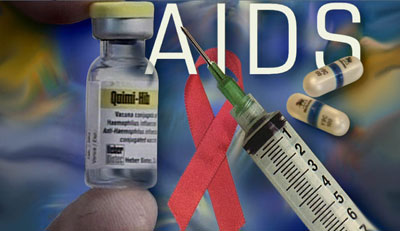One of the major challenges that confronted the democratic government was the rapid rise in HIV. Women bore a disproportionate brunt of the epidemic.
In 1990, less than 1% of pregnant women using public sector health services was infected with HIV. This figure rose to 30% by 2004 when the epidemic stabilised. The burden of disease per capita in South Africa increased enormously. This also placed a huge strain on the capacity of the health system to respond adequately.
Researchers noted that the main impact of HIV and AIDS on health services appeared to be increased hospital admissions, leading to ward overcrowding and consequent limited access for HIV-negative patients, a general increase in mortality, increase in maternal and child mortality and lowered life expectancy.
Since 2009 there has been significant improvement in all these negative features since the launch of a massive HIV counselling, testing and treatment programme.
While government policy regarding HIV and AIDS was ambiguous for some time, significant progress has since been made in accelerating interventions in collaboration with civil society, business and other key stakeholders.
In 1992, the National AIDS Coordinating Committee of South Africa (NACOSA) was created, which encompassed a national network of civil-society organisations working in the areas of HIV and AIDS, TB and social development. NACOSA produced a national HIV and AIDS strategy, which focused on preventing HIV transmission, reducing the personal and social impact of HIV infection, and mobilising and unifying provincial, international and local resources. The strategy was adopted by Cabinet in 1994 and subsequently reviewed in 1997. Under the stewardship of a transformed South African National AIDS Council (SANAC), national strategic plans for HIV and AIDS, sexually transmitted infections (STIs) and tuberculosis (TB) for 2007–2011 and 2012–2017 were produced. SANAC also enhanced the rapport and collaboration between government and civil society. SANAC was restructured in 2007.
South Africa now has the world’s largest programmes for providing ART to eligible people living with HIV, which has served to reduce new HIV infections and mortality from AIDS, thus ensuring child survival and prolonging life
The transformation encompassed 19 sectors, of which 17 were civil-society formations. The other two sectors were government and the business sector.
In 1990, life expectancy among Africans was 60 years for males and 67 for females. In contrast, life expectancy among white South Africans was 69 years for males and 76 years for females. Between 1994 and 2005, health outcome indicators, including life expectancy, deteriorated as the HIV and AIDS epidemic spread. Due to the comprehensive response to the epidemic and TB, this declining trend was reversed and the average life expectancy of South Africans improved from 51.6 years in 2005 to 59.6 years in 2013. Life expectancy has improved for both males and females.
A special group of senior professional nurses were trained on Nurse Initiated Management of Anti-Retroviral Therapy (NIMART) to help the country with the massive roll out of ART. Government increased the number of professional nurses trained on NIMART from 250 in 2009 to 23 000 in 2013.
South Africa now has the world’s largest programmes for providing ART to eligible people living with HIV, which has served to reduce new HIV infections and mortality from AIDS, thus ensuring child survival and prolonging life. As mentioned earlier, as a result of improved procurement processes, the cost of ART drugs has been halved, ensuring that more people are treated.
South Africa’s bold leadership in turning the tide against the HIV and AIDS epidemic, as well as the results achieved and the empirical evidence, is also acknowledged by the Joint United Nations Programme on HIV and AIDS47. The great strides observed by UNAIDS include the following:
❚ A decrease in the total number of people dying from AIDS from 300 000 in 2010 to 270 000 in 2011
❚ A 50% decline in the number of children aged 0–4 years who acquired HIV between 2006 and 2011
❚ A 50% decrease in the number of people acquiring HIV infection, from 700 000 in the 1990s to 350 000 in 2011
❚ A 25% decrease in the annual mortality rate of infants and children younger than five years in the past two years.
– By The Presidency, 20 Year Review Report


